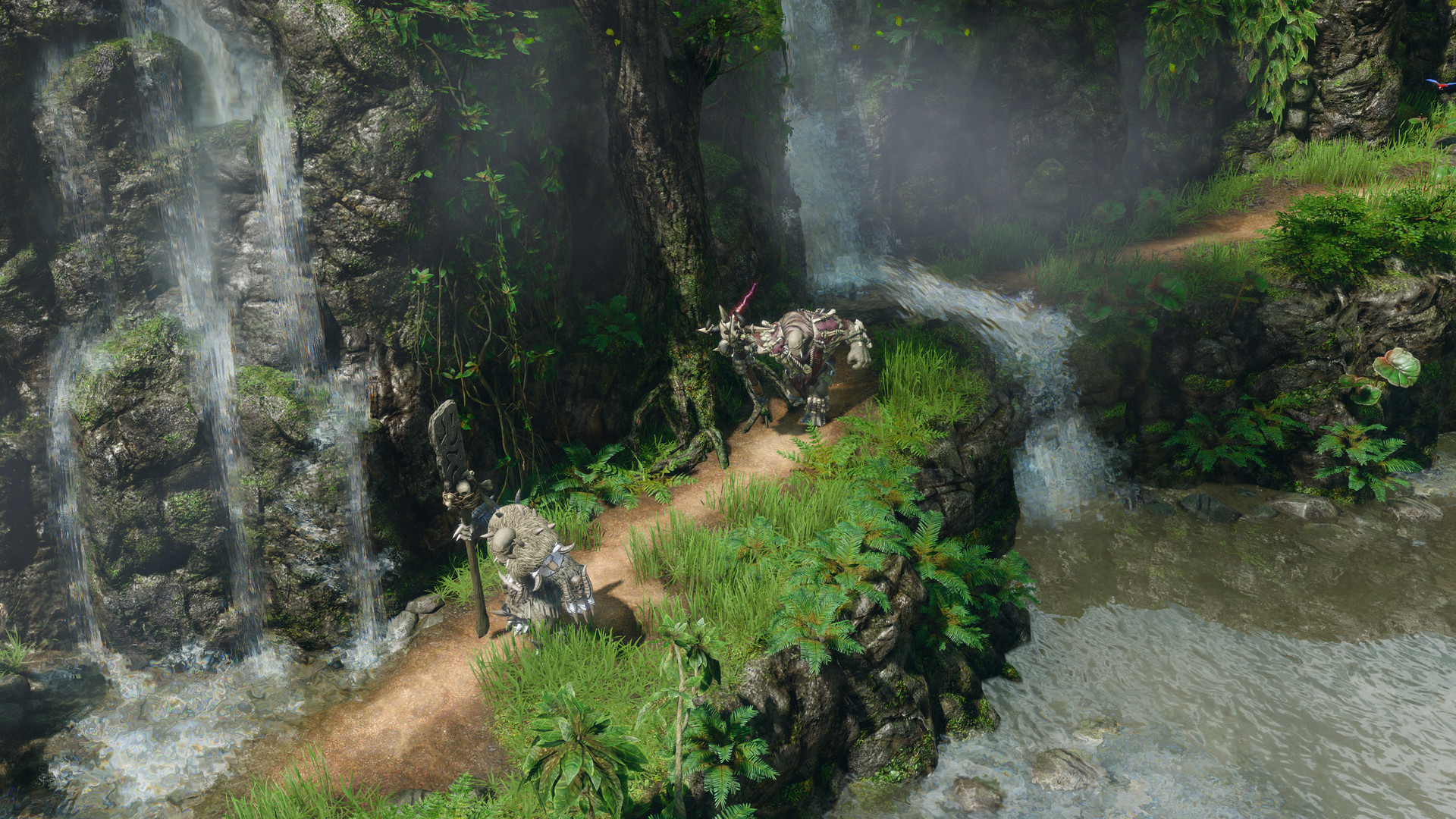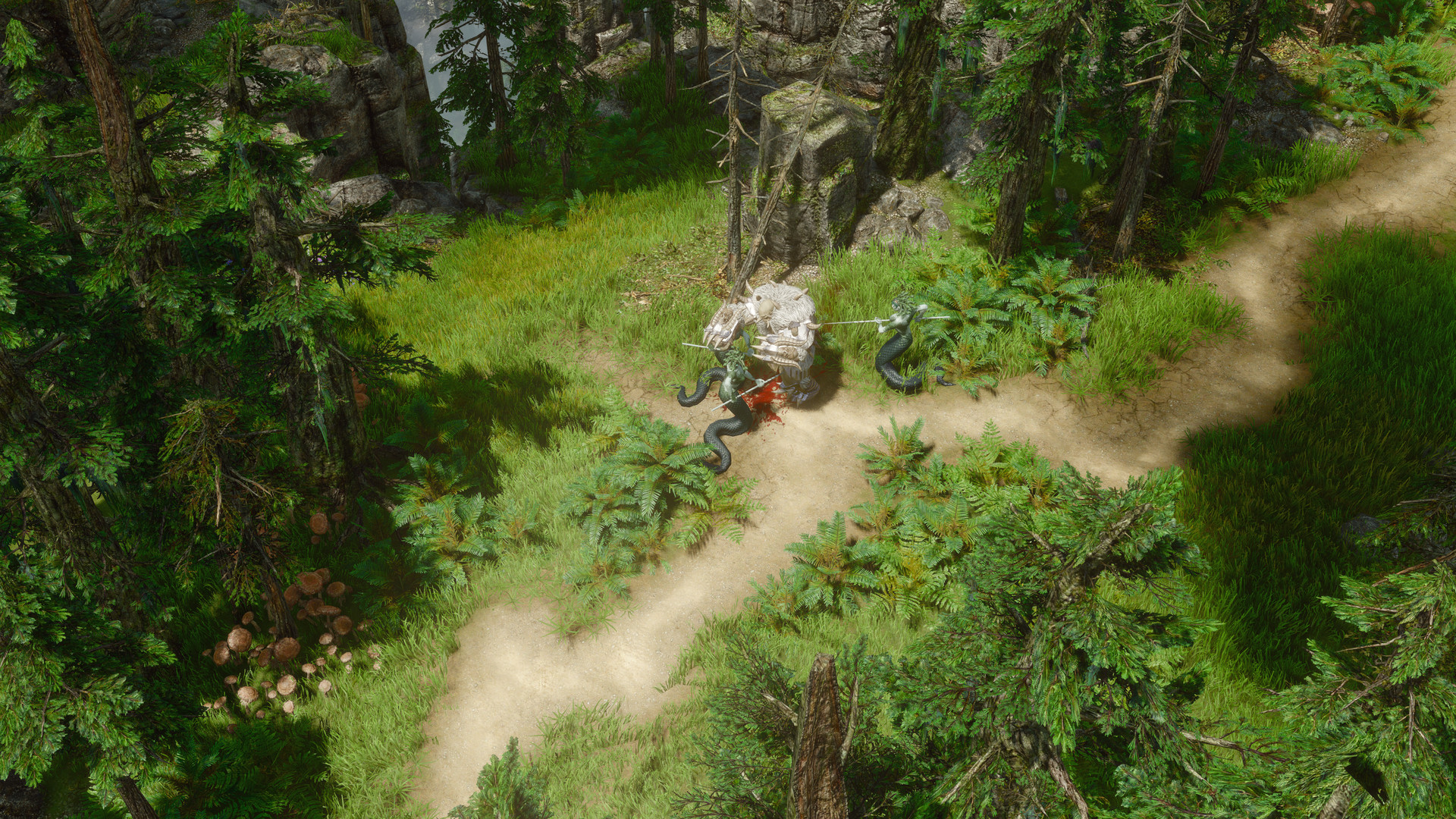You can finally troll hard without annoying anyone while you’re at it. SpellForce 3: Fallen God is the latest standalone expansion for the franchise’s most recent sequel. While the 2017 original SpellForce 3 focused on Humans in their struggles against Elves and Orcs, the 2019 expansion SpellForce 3: Soul Harvest was all about the intrigue between Dwarves and Dark Elves.
Now, it’s time for a “beastly race” to have its own spotlight in this RTS/RPG hybrid that is shaping up to be the Warcraft 4 we never got to play. Developer Grimlore Games did a fantastic job of bringing the SpellForce series back to life and THQ Nordic, the current IP holder, made the right choice in continuing to publish this particular type of real-time strategy focusing on the unique lore created by the original SpellForce: The Order of Dawn released in 2003.

Story
Indeed, just one year after the release of Warcraft 3. Why am I insisting on this series? Because it did justice for the “natural enemies” in most fantasy settings. You think about orcs and trolls and what do you picture? Potential heroes or even temporary allies? No, you regard them as targets, foes standing between you and the final fairytale victory.
We are putting those tropes in troll cages and focusing on the unconventional approach to Fallen God’s campaign. Let’s dispense with a couple of stereotypes surrounding trolls. When you imagine such mythical creatures, you will most certainly be aware of the fantasy trope that’s been around for almost as long as the genre itself: a mentally impaired monster that’s guarding the bridge which our hero must pass. Low cunning and a lot of physical strength.
At least the second part of the description still rings true. The trolls you shall role-play in this expansion tower over most creatures they encounter. Able to smash through most walls and gates, their intelligence should also not be underestimated. Trolls developed a tribal structure with a central deity to worship, as they seek guidance through elected chieftains based on a strict criteria of martial prowess as well as inherent wisdom.
They’re far from mindless brutes, grunting while cracking skulls and eating almost anything with a heartbeat. With the untimely demise of their Chieftain Narjak, the Moonkin tribe must elect a new leader from amongst their finest warriors. The tribe has suffered greatly from both a blood-borne disease and the constant hunting they’ve been subjected to by mercenary poachers looking to “untusk” trolls.

An eloquent reference to the vile practice of poaching elephants and rhinos for their tusks and horns, it’s clearly setting the stage for a story in which we can sympathize with the simple desires of the Moonkin to find a permanent shelter and survive the constant onslaught. You can, of course, enjoy SpellForce 3: Fallen God even if you never experienced another entry in this series.
The game wastes no time in explaining both the basics and slowly opening your eyes to its rich lore. It helps that the expansion chose locations on another continent, a tropical place named Urgath, instead of the base version or Soul Harvest which takes place in the temperate Fiara. You get a change of scenery and wildlife, not just a brand new campaign, that’s also quite unpredictable. Survival and freedom have steep prices after all…
Graphics
It’s been way too long since I last wrote about an in-house graphics engine powering a very specific franchise. That’s precisely what SpellForce 3 is using for its prevalent eye candy. Their latest version of Script-Engine is showcasing Fallen God in all its glory, enough to strain most GPUs if you’ll even dare to render it in 4K.
Yeah, that’s still not gonna happen in 2020, so dial it down a notch and maxing it at 2K res and 60 fps shall prove an achievable task, at least until you enact truly massive battles. The game has a complex User Interface that you can simply disable if and when you want to take screenshots.

By default, the HUD is always on since no RTS or RPG would be playable without a modicum of information always shown on-screen. Alongside gorgeous artwork pieces for the loading screens, Fallen God will offer numerous opportunities for future backgrounds of the best kind: the ones you make yourself.
Audio
Quality visual assets can only be accompanied by the same level of polish for audio assets, right? Well, not in all cases, yet Fallen God has passed that test with flying colors. You get plenty of voice acting which never skips the “troll accent” even during cutscenes or loading screen narrations. One bit I found both engaging and lore-friendly is how trolls refer to themselves in the third person at all times.
“Mugwa’s gift of speech” (their patron goddess) has its own little quirks which certainly transcended the tiresome “Me smash puny hooman!” roars of generic trolls. Soundtrack is of note, yet I’ll refrain from linking it here since the last time I did that for the 2017 version, it got removed from YouTube or something. All good things must come to an end. Until you re-upload.
Gameplay
Expect an almost ARPG combat style for the heroes you’ll be controlling. For the base-building aspect that gets mixed in with troop recruitment, you can expect a competent RTS experience with the noted exception that you’ll be retraining troops in a linear progression based on your tactical needs. In other words, there are only a handful of buildings for each faction and you’ll initially produce low-quality melee fighters that become specialized if you further invest in their training.
This can branch out into ranged combat as well. It all seems very logical and it reminds me of the first RTS in which I encountered this gameplay mechanic: 2001’s Battle Realms. There are no zerg rushes here, the AI is not overly aggressive even on the hardest difficulty. Your mileage may vary on the Skirmish mode, of course.

The heroes have specific skill trees which encompass both toggled abilities and passive powers that act as buffs for the whole party (and by extension the army, if it’s led by a hero). Story-related events will further develop some characters in a pre-determined fashion, while certain quests can also be completed with some form of deviation from the main plot.
The dialogue branches enough to leave room for replayability. Try to complete the secondary objectives even if they’re on a time limit. Last but not least, the inventory system for the trolls differs a bit from the other SpellForce entries: you will need to salvage loot, turn it into scrap, and then can you mold it into troll-usable weaponry or armor. Magic is an option too, it’s called “hex power” by our not-so-gentle-giants.
Hybrid or not, SpellForce 3: Fallen God has managed to offer a fine experience for fans of either strategy or role-playing. Why not enjoy them both at the same time? PC exclusives shall end this otherwise dreadful year on a high note, at least gaming-wise. If you’re tired of knights in shining armor, pointy-eared tree-huggers, or stunted gold diggers, give the Trolls a chance to smash their way towards absolute freedom!
Summary
Strong Points
+ Gorgeous graphics and sounds.
+ Steam Achievements & Trading Cards.
+ Excellent mix of RTS with RPG elements.
Weak Points
– None worth mentioning.
Links
- Get Spellforce 3: Fallen God on Steam
- Follow Un0w3n on Steam, author of this article
- Do you like scary games? Check out our Top 5 scariest Halloween games, you won’t be disappointed!